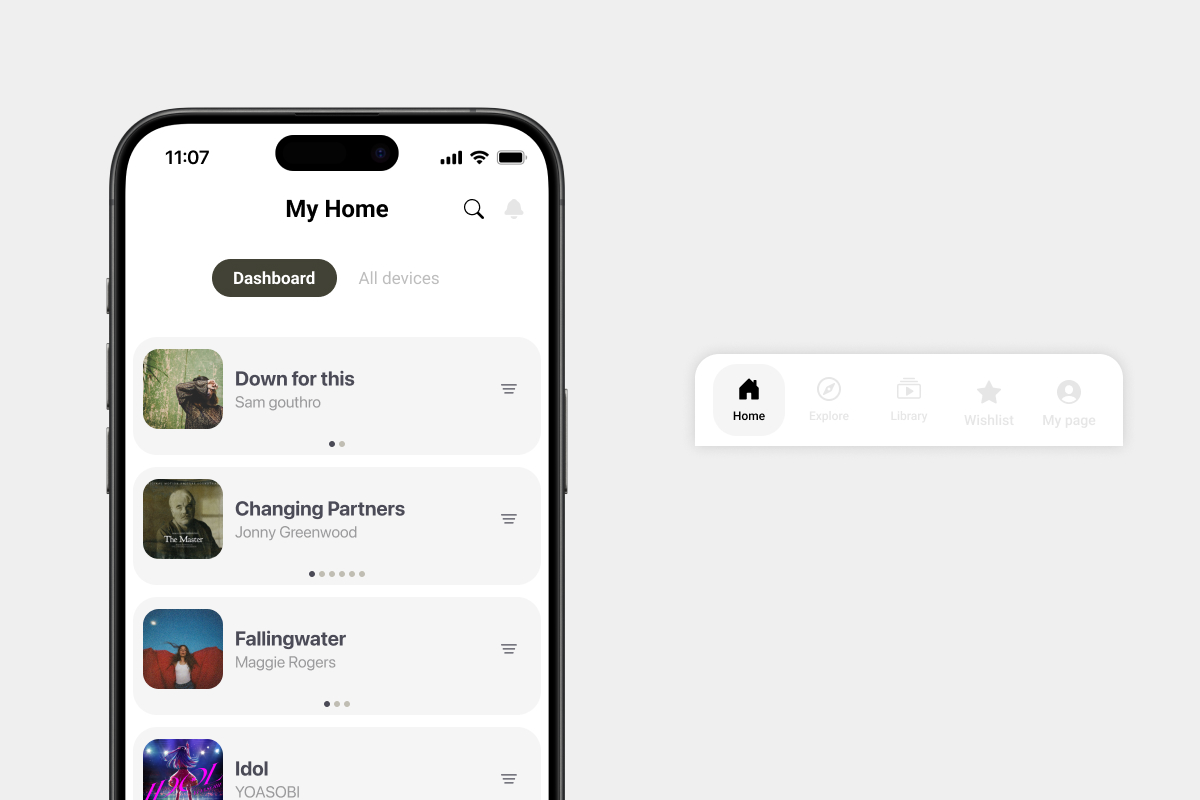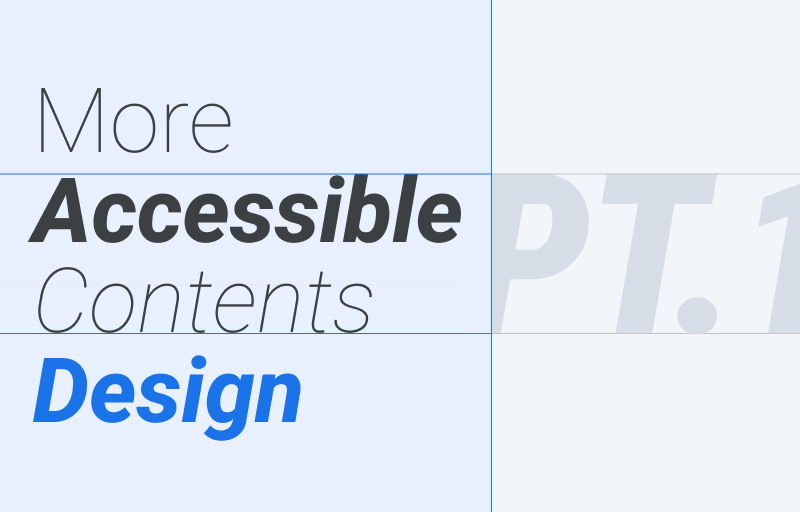December 6, 2023
Contents design guideline from Material I/O Part.2
Global writing is easier to read, understand, and translate

Eugene,
UX/UI Designer

Global writing is the practice of writing inclusively for many cultures and optimizing for localization. This makes writing easier to read, understand, and translate. Writing for localization is necessary when a product will be translated, but can also be a helpful lens when writing for anyone.
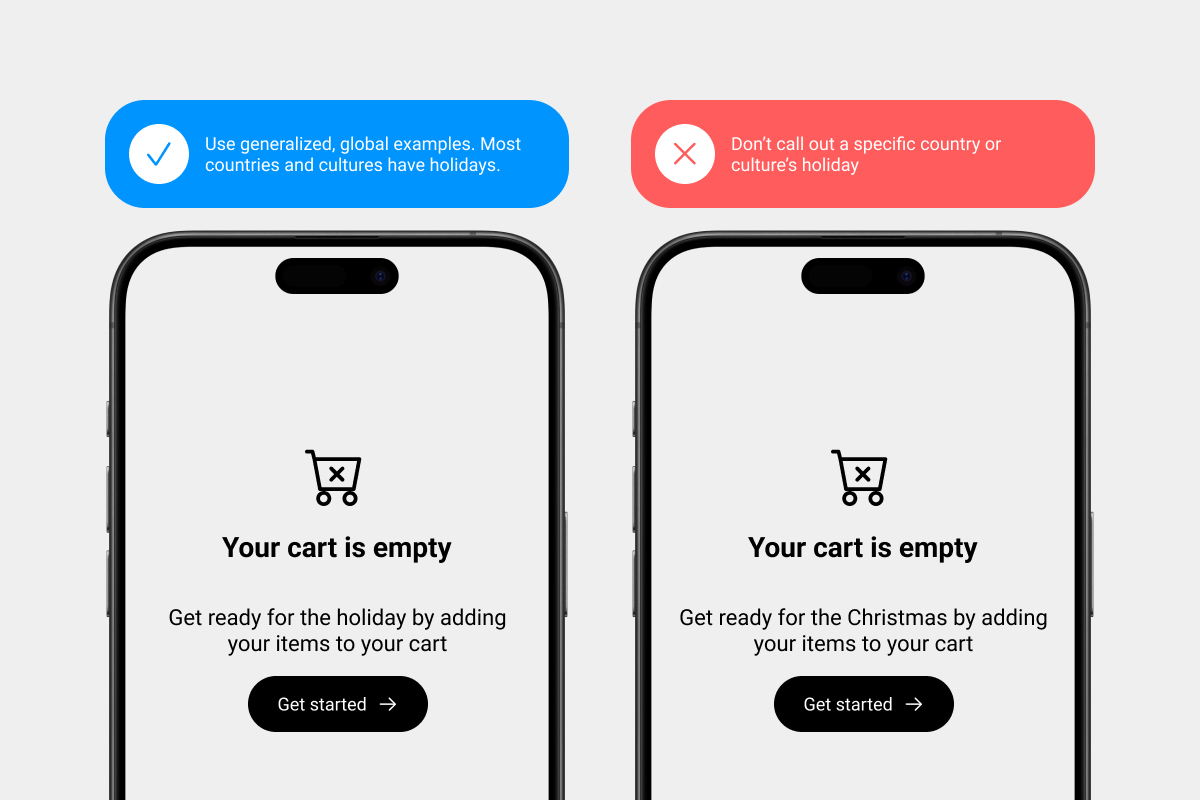
Word choice
Use global examples & explain local references
References to local places, holidays, and companies won’t always make sense to global audiences.
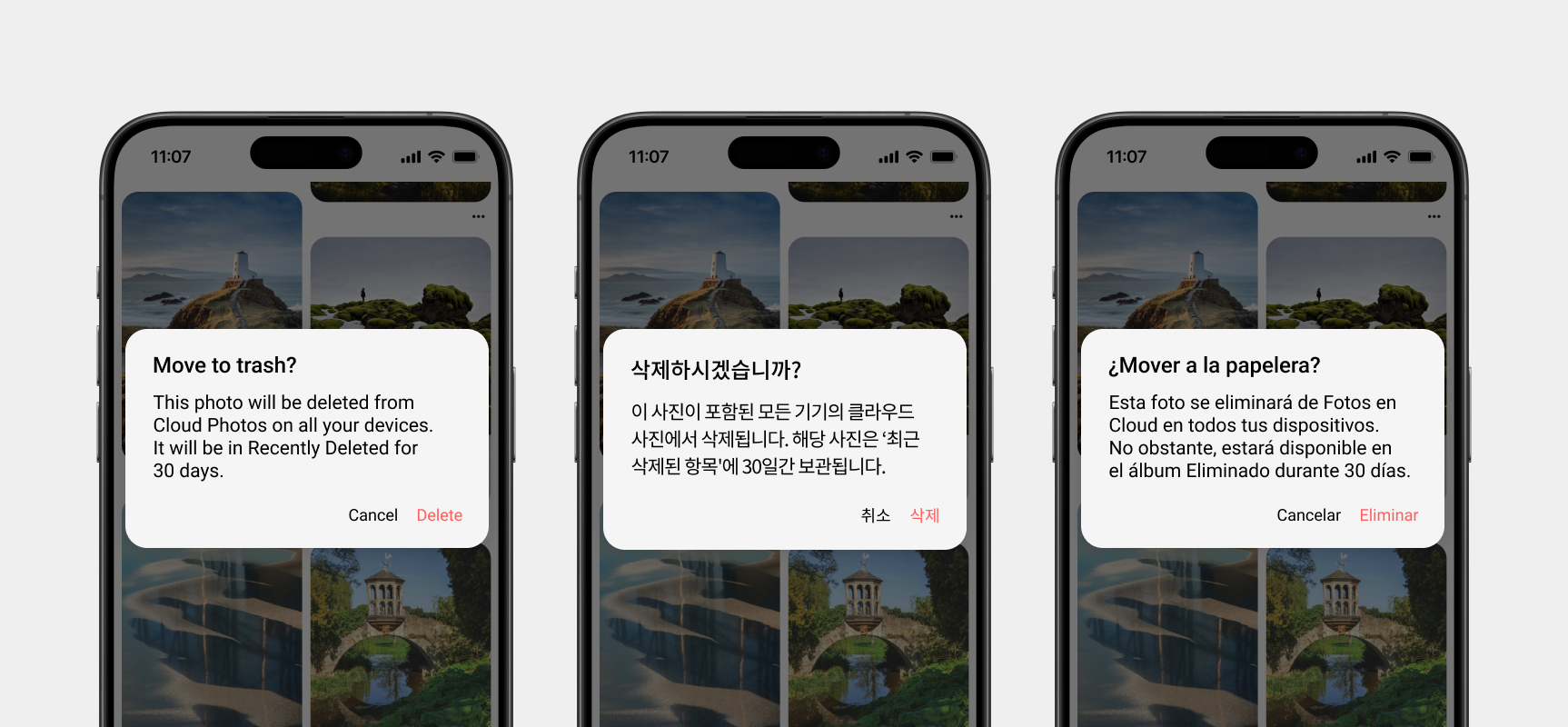
Use short, simple sentences
Break text into shorter sentences. Use bullets or separate content into sections with headings.
Each of languages have different type face, so sentence’s length is different even though they have same meaning. So text may be more longer or shorter when translated.
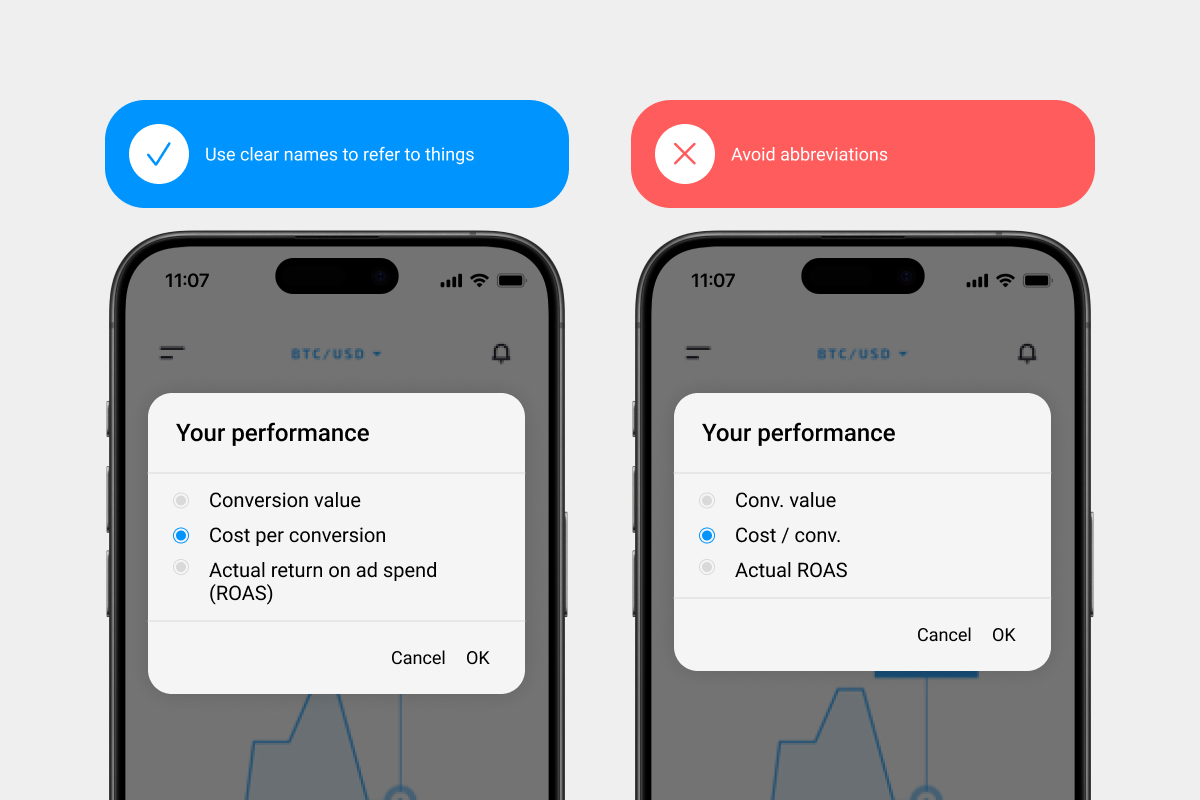
Avoid abbreviations
Abbreviations don’t translate well and can be confusing out of context. Spell things out whenever possible. However, common abbreviations for time are acceptable.
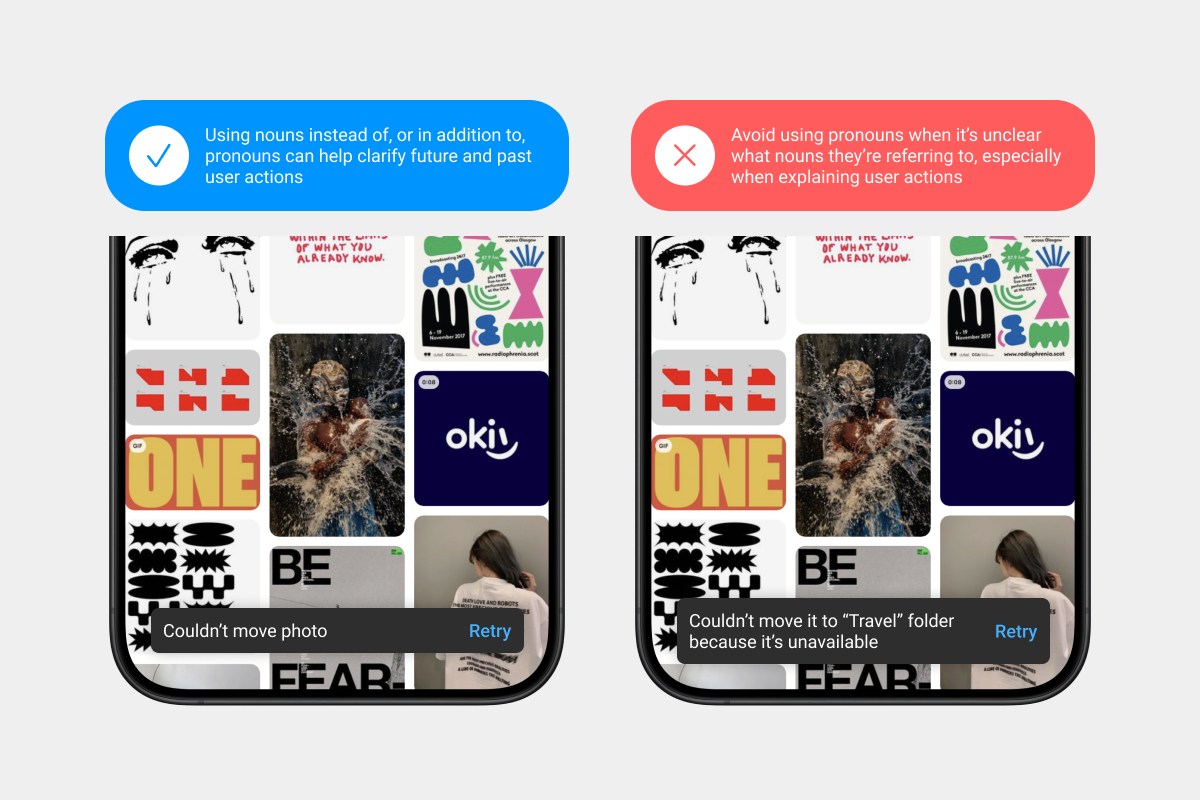
Clarify pronouns
Using pronouns, like “it,” can get tricky when translators are working with small, unconnected strings of text and when nouns have genders in many languages. Repeat the noun, or clarify the noun in a message description.
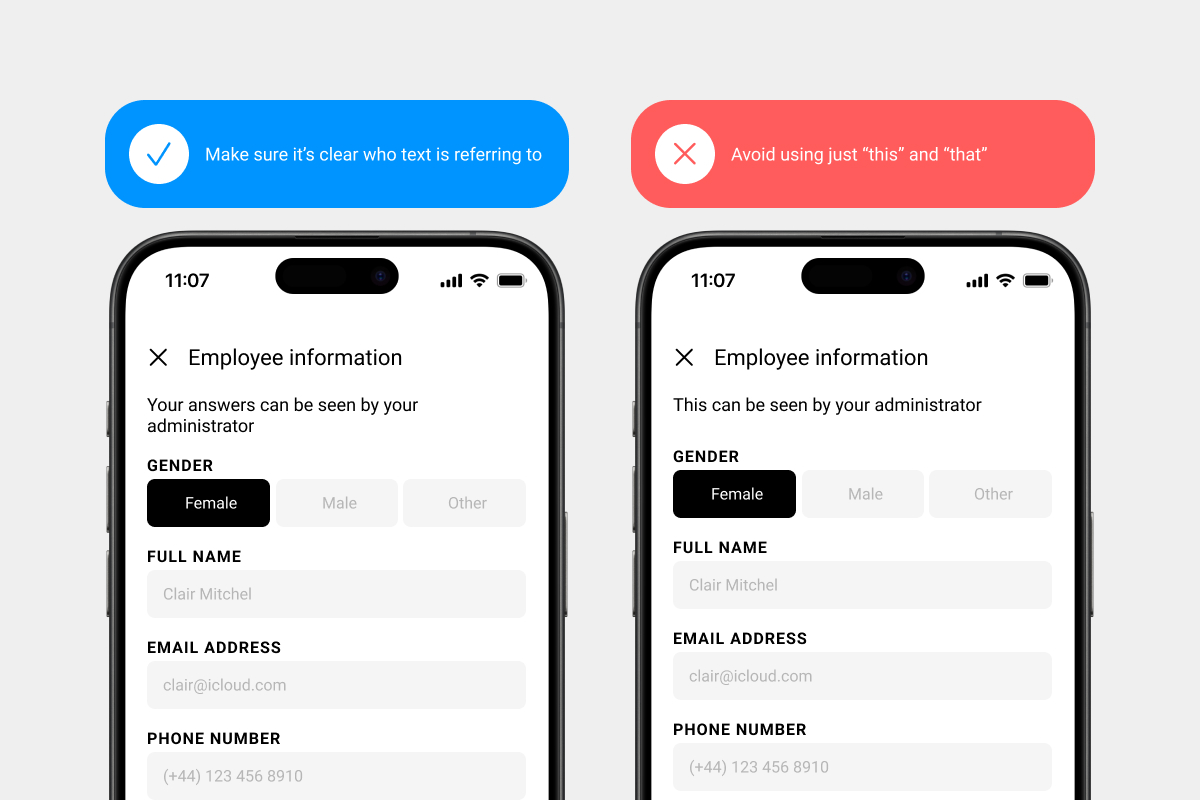
Clarify “this” and “that”
Don’t start a sentence with "this" or "that" unless it's immediately followed by the noun. When the noun is unclear, the sentence is more difficult to translate.

Avoid idiomatic, colloquial, and polite expressions
Idiomatic or colloquial phrases can be confusing if the meaning isn’t clear. If you use them, clarify the purpose and context of the phrase to help the translator choose an appropriate alternative.
Avoid polite expressions, such as “Please,” “Sorry,” and “Thank you,” especially in error messages. However, "please" may be used when asking the user to do something inconvenient.
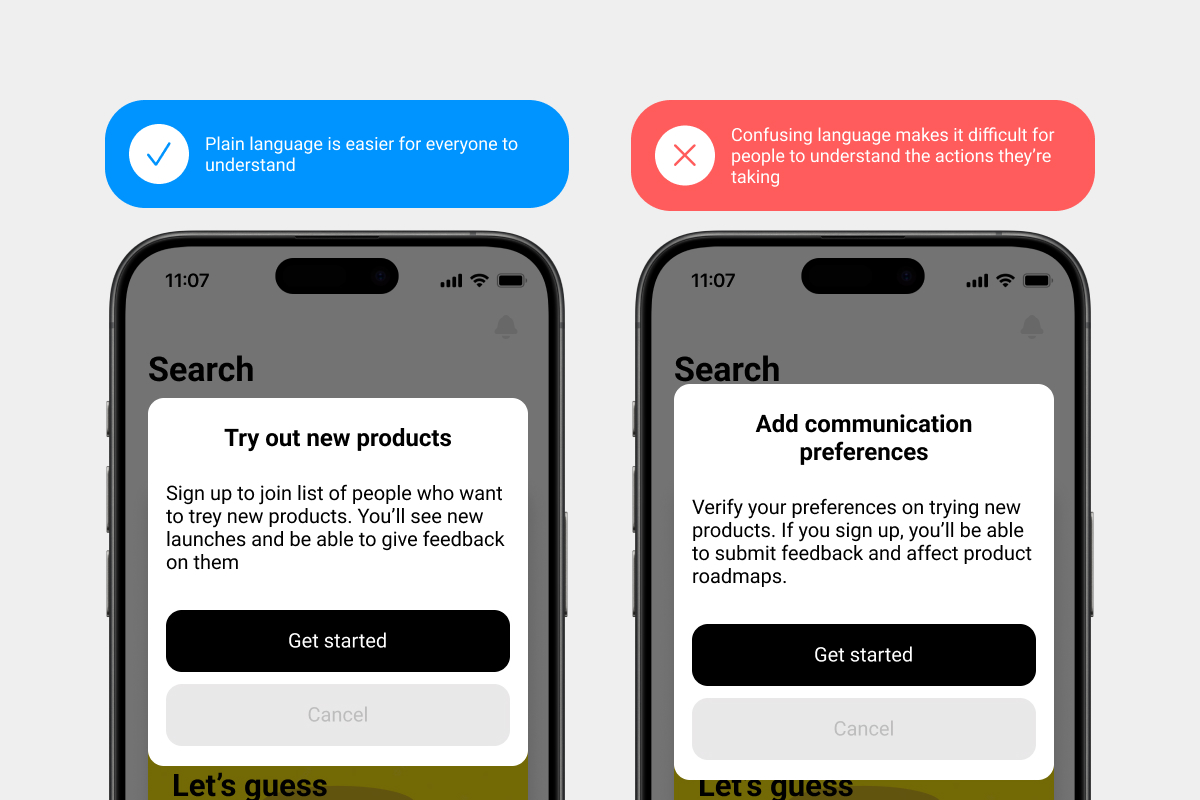
Reduce technical jargon
Technical terms don't always translate. Descriptions should be simple, and in some cases literal, to avoid confusion when translating.
